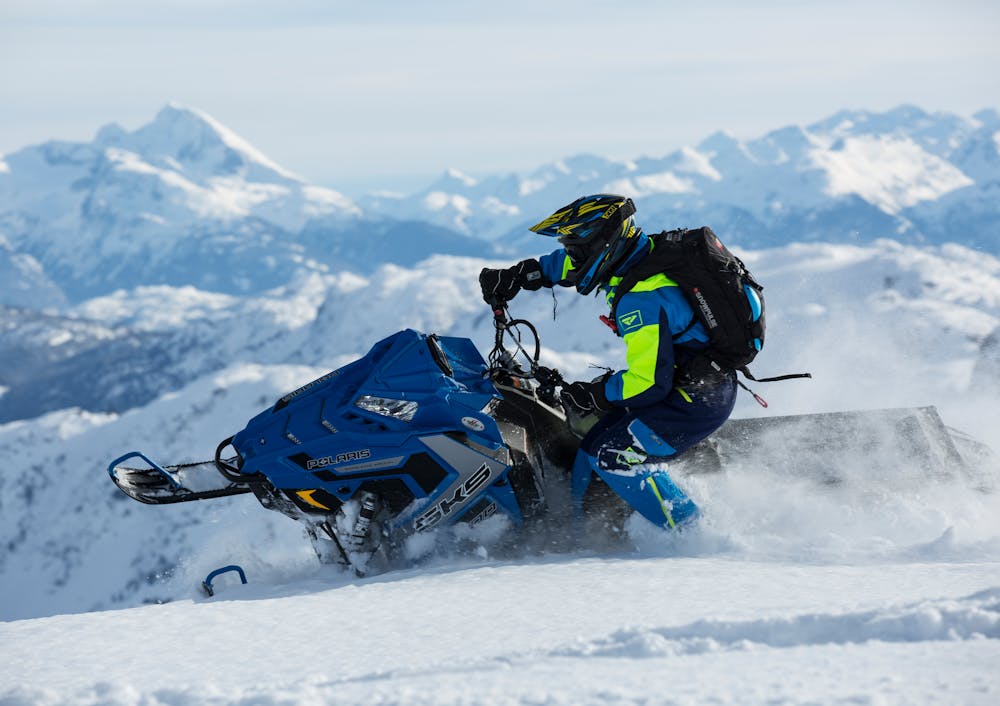North America is home to approximately 135,453 miles of marked snowmobile trails, giving you endless opportunities to explore. There’s nothing like venturing deep into a snowy wonderland, charting unrecognizable terrain on a motorized sled because it challenges you in ways other recreational activities don’t. Enjoying the scenery means insulating yourself against the elements and complying with the law of the land. From long-distance camping to jaunts around the park, learn how to prepare for a trip to ensure you get home safely.
Gather Your Gear
The law requires you to wear a helmet when riding a snowmobile. You can use a full-face or half-face helmet with goggles, but your head and eyes must be covered. Attach snowmobile helmet communication to talk to your companions hands-free while riding. The headset mounts onto any helmet and connects automatically when in range to keep you focused on the trail.
You must also wear waterproof gloves, boots and an outer shell, including snow pants and a jacket or onesie. Bring removable inner layers like a fleece or wool sweater and long-sleeve thermals for added insulation.
Lay out everything you need to check for holes, rips, dents and weak spots that can leave you vulnerable to the cold and accidents. Try them on to see if they fit without limiting your range of movement.
Pack a snowmobile survival kit with a compass, radio, flares, a first-aid kit, snacks, water, a flashlight, extra batteries, a foldable shovel and a probe. If riding near cliffs or uphill, bring an avalanche airbag and a location beacon to prepare for the worst.
Inspect Your Vehicle
Whether renting or bringing your sled out of storage, go over the snowmobile with a proverbial microscope to identify potential hazards. Check throttle, brake and electronic control functionality, test the battery and inspect connections and fuses. Ensure nothing is blocking the air intake filter, change the oil if it is low or dirty and examine the belt and gears for wear, rust and leaks. Double-check the track and ski alignment.
Learn the Controls
Every snowmobile features a slightly different interface. Review the functions and practice the basics before straying too far from home or the rental shop — even if you’re a seasoned rider. Get a sense of how the sled handles and listen for strange sounds and reactions that could throw you for a loop mid-trail. Use these snowmobile riding tips to refresh your memory and take a beginner’s course to gain the confidence to travel longer distances.
Research the Rules and Regulations
States regulate snowmobiling and outdoor recreation. Each territory imposes rules based on its unique geographical features and concerns. Consult with your park service or state authority to learn more about the requirements. You must pay a registration fee or get a day pass to ride on most trails. If riding on private property, get written consent from the owner to prove your right to access the terrain.
Choose Your Route
Planning every step of your adventure doesn’t make it any less exciting. Knowing what to expect from the trail ahead gives you peace of mind to enjoy the experience instead of worrying about your health and safety. Choose a route based on your experience and comfort level and mark it on a paper map. Tell the park authorities or the property owner where you’re headed and when you plan to return.
Use wireless off-road headsets to navigate the route with your fellow riders. The person out front should radio to the rest of the group if the trail looks unsafe or impassable. Devise a backup plan and let your companions know where to go to avoid getting separated.
Get into Position
Keep your body in a comfortable position to reduce fatigue. You should sit upright on the seat with your back straight and feet firmly on the running boards. Use your body to lean in the direction you want to go, with your legs hugging the sled so you stay attached. Focus on the trail by looking several steps ahead with your head up. Talk directly into your headset to communicate instead of looking over or using hand signals.
Ride with Care
Blankets of snow can give the impression that everything white is fair game, but not all trails were made to be tread. The precipitation can mask underlying hazards that could damage the underside of your sled. The excess vibrations can limit your control or knock you out of position. Stick to the designated passageway to stay on smooth ground. If you lose the trail in the snow, reduce your speed and proceed cautiously to minimize disruptions.
Snowmobiling for Success
A trip through the tundra can be unpredictable. These steps will help you prepare for the many possibilities and potential risks of snowmobiling so you don’t get cold and can always find your way home. The more you plan, the more you can enjoy the thrill of gliding over the snow.


